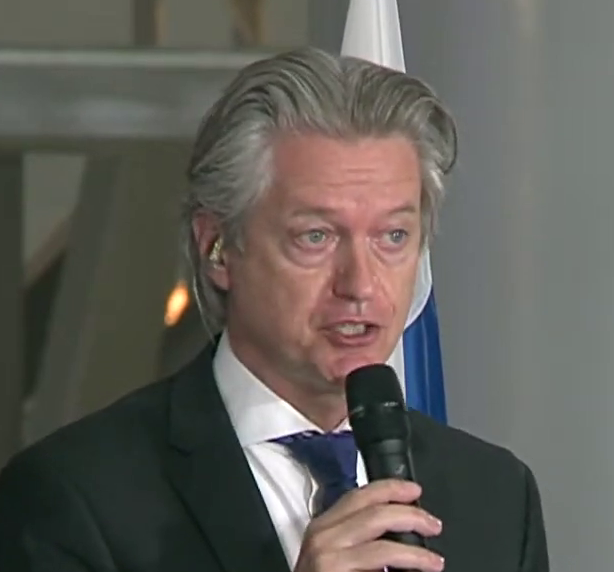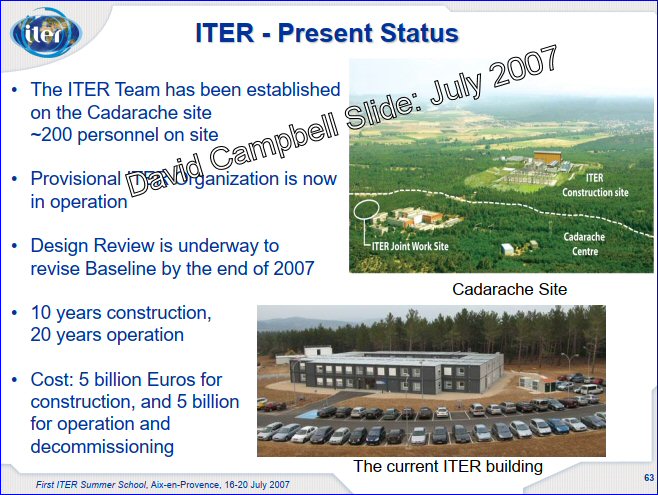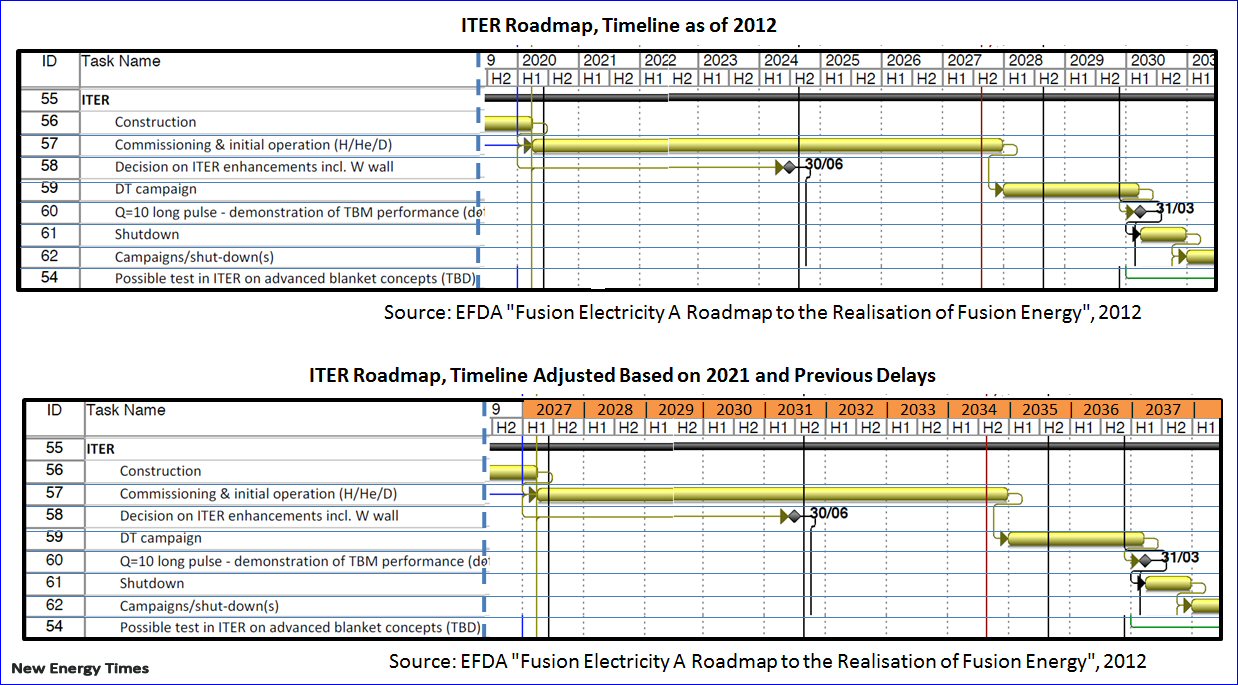#75 ITER Fusion Reactor First Plasma Delayed (Again)

ITER Organization Spokesman Laban Coblentz
Return to ITER Power Facts Main Page
Originally Published: June 18, 2021
Updated: Sept. 17, 2021
By Steven B. Krivit
The first experiments to create a plasma in the International Thermonuclear Experimental Reactor (ITER) are no longer scheduled to start in 2025. This is the main conclusion of the ITER Council videoconference meeting that took place on June 16 and 17, according to an ITER organization staff member who was not authorized to speak on the record.
First plasma (with test fuels) can no longer be expected in 2025; the delay is estimated to be at least one year, so this means 2026 or 2027. The delay is caused primarily by late deliveries of a number of critical components from several members, particularly the vacuum vessel sectors from Europe, and to some extent by the pandemic.
Use of actual fusion fuel, a 50/50 mixture of deuterium and tritium, will begin about eight years later, in 2035. Full-power operation is planned two years later, around 2037, according to the 2012 fusion roadmap, adjusted to the current schedule.
When the ITER project was approved by its international partners 15 years, ago, the organization estimated that construction of ITER would take ten years. They broke ground in 2007. Based on the current schedule, construction will take about 20 years.

A press release issued by the ITER organization on June 17, 2021, summarizing the meeting does not disclose the delay but hints at the possibility.
“The effects of some technical challenges and the ongoing pandemic are being closely monitored and will be further assessed after due consideration of all possible mitigation measures to prevent any delays that could impact the schedule for the achievement of First Plasma,” the organization said.
Bernard Bigot, the director-general of the ITER organization, publicly acknowledged the likelihood of delays several months ago, when speaking at the International Atomic Energy Agency conference, according to Nuclear Engineering International magazine.
Sept. 15, 2021 Update: Original 10-year construction estimate added.
Sept. 17, 2021 Update: Added projected date for full-power operation.


